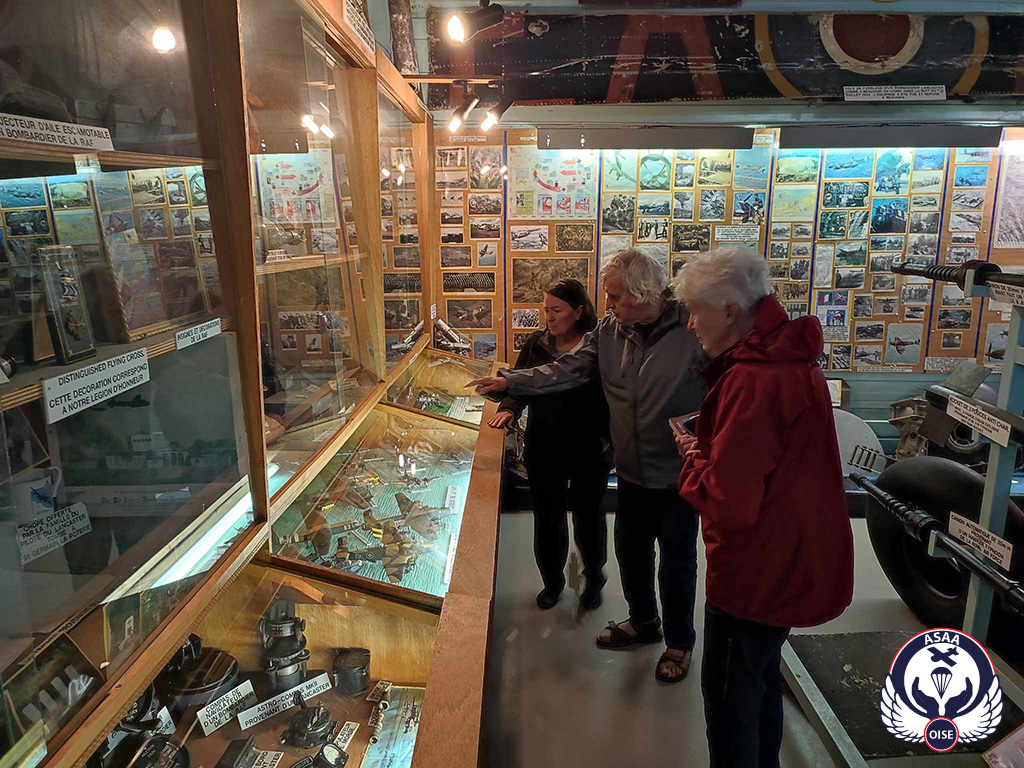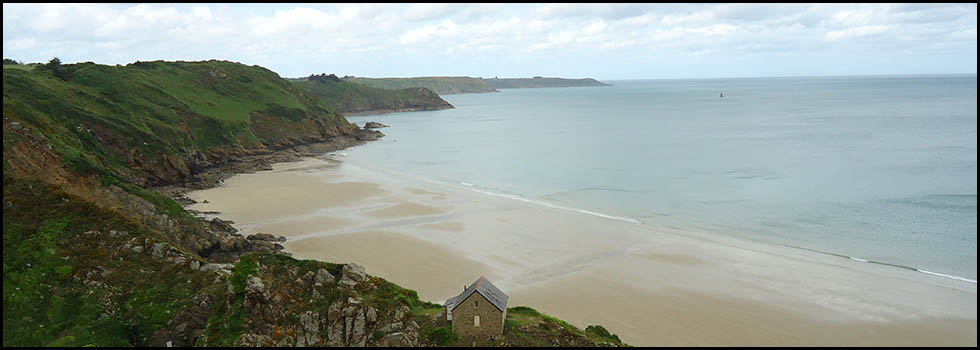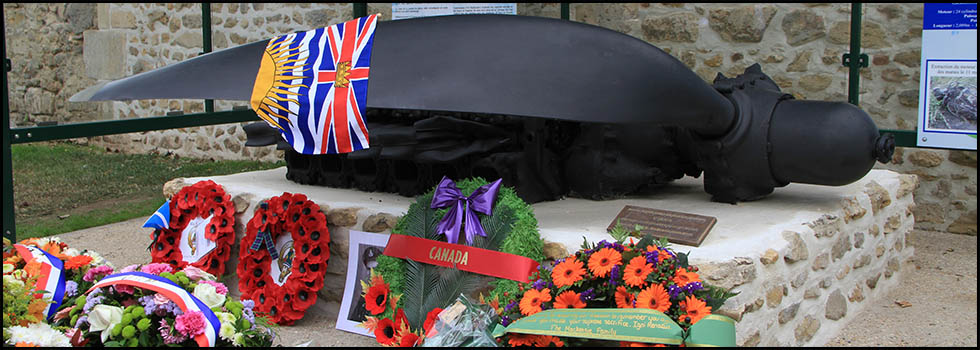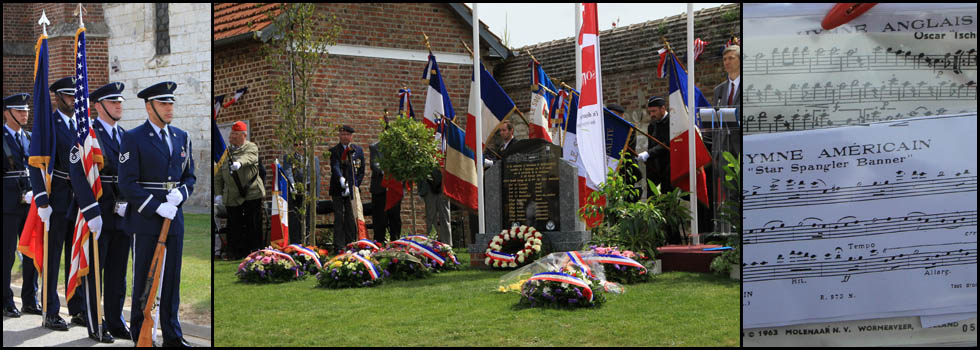30-31 July 2023
Beauvais, Léglantiers (Oise)
Visit of Rosalind Brice, daughter of F/S Colin A. ALT,
Australian pilot of the Vickers Wellington Mk II, 12 RAF Squadron,
shot down on the night of 2nd to 3rd September 1942
Copyright © 2023 - Association des Sauveteurs d'Aviateurs Alliés- All rights reserved -
En français ![]()
On 30 and 31 July, we welcomed Rosalind Brice and her husband Garth from Canberra (Australia). Also present were their cousin David and his wife Dorothy (from Sydney).
Rosalind Brice is the daughter of Flight/Sergeant Colin A. Alt, Australian pilot of the Vickers Wellington Z8529, RAF 12 Squadron, shot down near Léglantiers on the night of 2/3 September 1942.
During a trip to Europe, Rosalind and her family wanted to visit the place where her father had been in 1942.
Their visit began in the Saint-Jean district of Beauvais, on the site of the former Agel barracks where her father and his two crewmates were temporarily detained after their capture and before their transfer to Paris. The barracks were demolished in 2003 as part of an urban renewal project. All that remains today is a brick stele from the barracks, a reminder that it was a place of internment and transit to the concentration camps for many Resistance fighters.
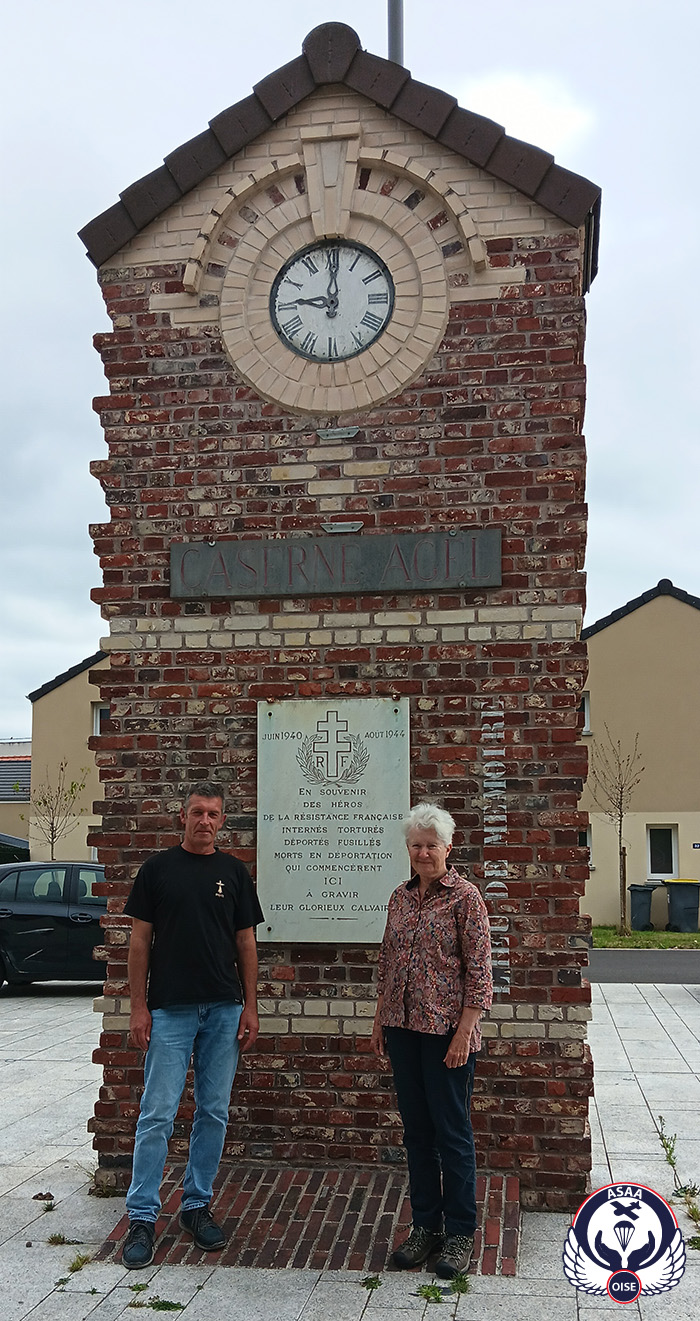
The following day, 31 July, at the Beauvais-Marissel national necropolis, a moving tribute was paid to the two crew members who perished: F/S Francis E. Monckton (Australian) and Sgt John. I. M. Logan (Rhodesian).
On behalf of her father, Rosalind said a few words: "Apologise for failing to get them back to base – something that was my responsibility and mine alone…. I have never forgotten them and in fact the memory of them has lived with me ever since. Ask their forgiveness and express hope that life hereafter (as I believe exists) has been to their benefit…”
With her hand on her heart, Rosalind then prayed and thanked God for the sacrifice made for their country and for the peace that followed. A minute's silence was observed, and roses were then placed in front of each of their graves.
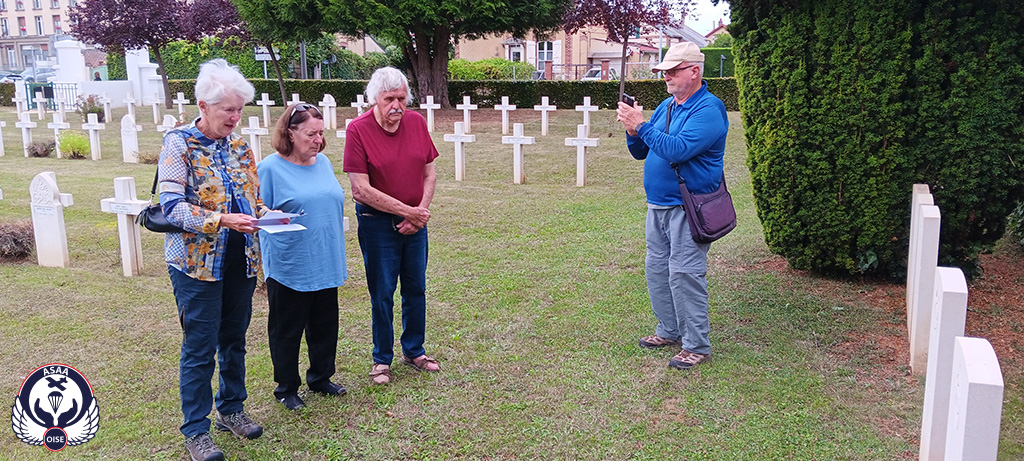

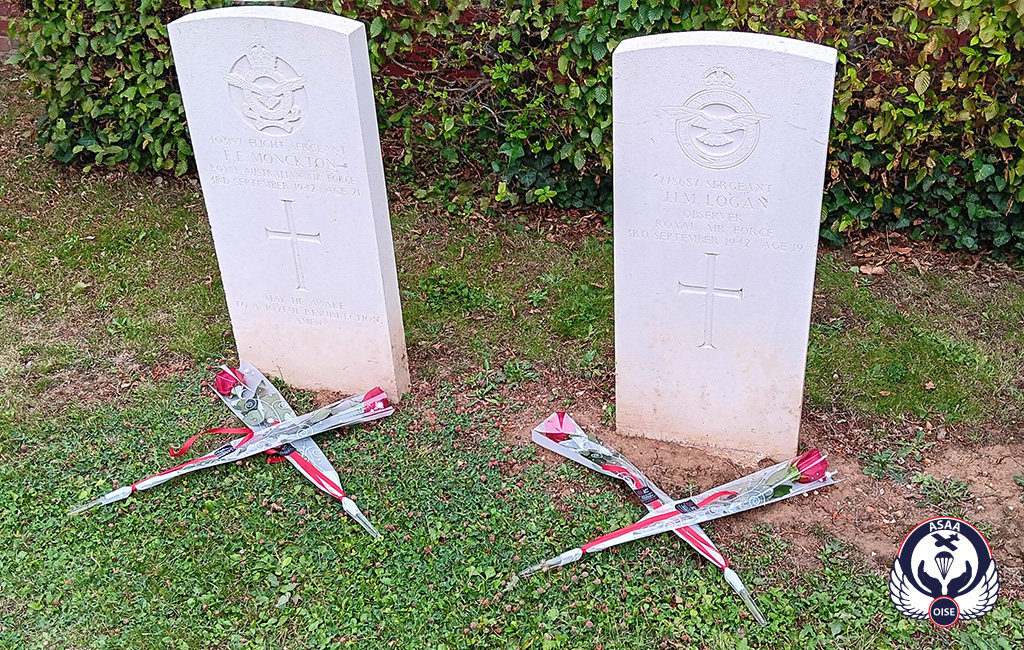
The next stop on the tour was the village of Léglantiers. At the foot of the church, the pilot's descendants were able to meet Mr Charles Beaufrère, certainly one of the last witnesses to remember the plane being shot down. In front of our grateful Australian friends, he recalled his memories:
"I was 11 at the time. We lived in La Neuville-Roy, a nearby village. My father was an aviation enthusiast. He'd heard that a bomber had crashed near Léglantiers Wood so, in the days that followed, he took me with him to see the wreckage. I remember part of the fuselage in the field but I don't remember seeing the wings or the engines. The Germans must have removed part of it by the time we got there..."
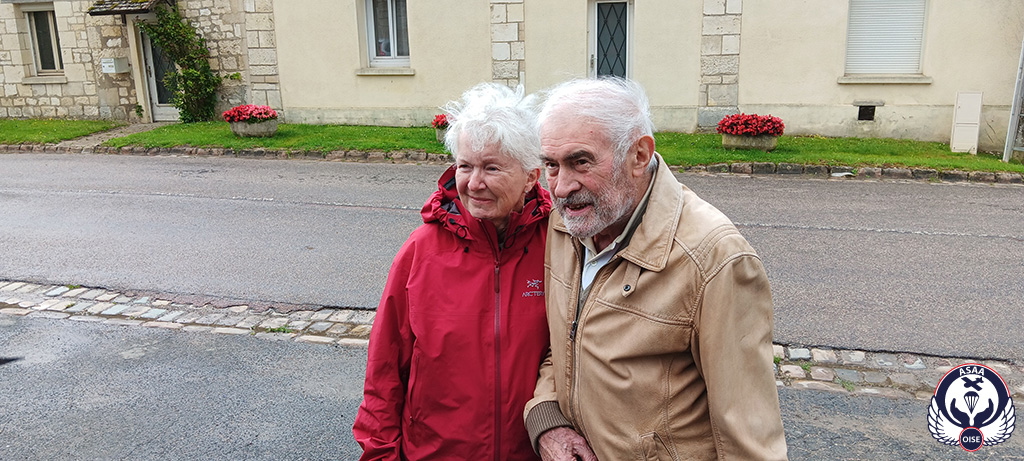
We then headed for the crash site on the edge of the Léglantiers woods.
Like the visit to the Beauvais military cemetery, this pilgrimage to the crash site was a must for Rosalind and her family. Before their astonished eyes, a few small pieces of aircraft debris were quickly found. More than 80 years later, various small pieces of metal from the bomber still litter the undergrowth. Among the most significant pieces found: part of the altimeter, a parachute buckle and a plate from an oxygen regulator. All precious relics that the pilot's family will be taking back to Australia.
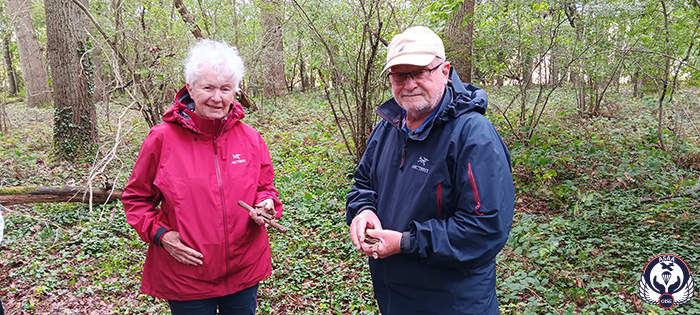
Contemplating these small remains, Rosalind expressed her thoughts, her eyes flushed with emotion: "I have a mixed feeling about being here. My father would be incredulous to know that we're on the same spot where the remains of his plane still stand. I'm not sad, but I feel deeply connected to the difficult situation my father faced. My sadness is for the two young men of the crew who did not survive and for the way my father has carried this burden all his life".
The day ended with a visit to the Beauvais-Warluis Aviation Museum. Among the collections on display, our Australian friends were able to see various parts of a Vickers Wellington, including a tailplane with its characteristic structure.
